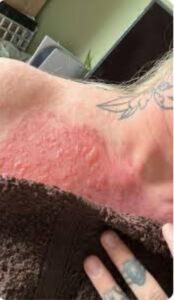 Numbing Cream Nightmare: The Hidden Side Effects They Don’t Warn You About
Numbing Cream Nightmare: The Hidden Side Effects They Don’t Warn You About
Before getting a tattoo, laser treatment, or cosmetic procedure, many people reach for numbing cream thinking, “No pain, no problem.” But what if that numbing cream—meant to protect you from discomfort—could cause dizziness, seizures, or even death?
Sounds dramatic? It’s not. While numbing creams are generally safe when used correctly, the side effects of misuse or overuse can be far more dangerous than most people realize.
Here’s the hidden truth they don’t always tell you at the salon or in the online reviews.
⚠️ What Is Numbing Cream, Really?
Numbing creams contain topical anesthetics, such as:
- Lidocaine
- Prilocaine
- Benzocaine
- Tetracaine
These work by blocking nerve signals in the skin, so you don’t feel pain. Seems like a miracle, right? But when absorbed in large quantities, these drugs don’t just affect your skin—they start affecting your heart, brain, and blood.
😨 The Side Effects They Don’t Advertise
1.
Systemic Toxicity (Too Much Enters the Bloodstream)
When numbing creams are applied too thickly, over large areas, or covered with plastic wrap (to “boost” the effect), your body can absorb dangerous levels of lidocaine or other anesthetics. This can cause:
- Dizziness or confusion
- Tingling or numbness beyond the application site
- Slurred speech
- Seizures
- Irregular heartbeat
- Coma in extreme cases
Yes—coma.
This condition is called local anesthetic systemic toxicity (LAST) and it’s rare, but real.
2.
Methemoglobinemia
This mouthful of a condition happens when anesthetics like benzocaine interfere with your blood’s ability to carry oxygen. It turns your blood dark chocolate brown, and your skin can appear gray or blue. Symptoms include:
- Shortness of breath
- Fatigue
- Rapid heart rate
- Cyanosis (bluish lips or fingers)
If not treated quickly, it can be fatal.
3.
Allergic Reactions
Some people are sensitive or allergic to lidocaine or other ingredients in numbing creams. Reactions may include:
- Rashes
- Hives
- Swelling
- Anaphylaxis (a life-threatening allergic response)
Ironically, trying to avoid a little pain can trigger a full medical emergency.
4.
Delayed Healing & Infection
Using numbing cream improperly before procedures like tattoos can interfere with how the skin reacts to the needle or laser. This can result in:
- Poor ink retention
- Slower healing
- Increased risk of scarring or infection
Some tattoo artists even refuse to work on clients who are using numbing cream for this reason.
💡 So… Should You Still Use It?
Yes—but with extreme caution.
If used according to medical guidelines or under professional supervision, numbing cream can be a helpful tool. But never:
- Apply it over broken skin or large areas
- Use more than recommended on the label
- Wrap it in plastic or foil unless instructed by a professional
- Mix multiple creams together
- Use it if you have heart problems, breathing issues, or blood disorders—without consulting a doctor
🧠 Final Thought: Comfort vs. Consequences
Pain is never pleasant—but in the pursuit of comfort, don’t trade temporary relief for permanent damage. Numbing creams might dull the sting, but their risks are real, and in some cases, life-threatening.
So next time you’re about to apply that seemingly harmless cream, pause and ask:
“Am I numbing the pain—or ignoring the danger?”
Leave a Reply